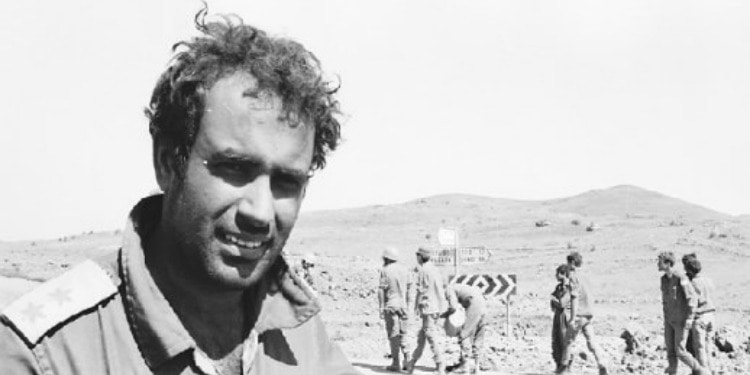IDF Commander Who Saved Golan Heights
Stand for Israel | April 3, 2019

The recent American recognition of Israel’s sovereignty over the Golan Heights has brought the region back to the forefront of international attention. But it has long been an important place for Israel. JNS’ Avrohom Shmuel Lewin talks to Avigdor Kahalani, the IDF commander who during the 1973 Yom Kippur War heroically led Israel’s defense of the Golan against Syria:
If ever there was a counterpart to the biblical story of young David facing Goliath, the Yom Kippur War was just that. Avigdor Kahalani, now 74 and a modern-day David, was commander of a tank battalion in 1973 that blocked a Goliath Syrian army from conquering the Golan Heights.
When the Yom Kippur war broke out in 1973, more than 1,400 Syrians tanks poured into the Golan. Opposing them were just 170 Israeli tanks, led by Lt. Avigdor Kahalani. At first, the Syrians seemed poised to push into the Jordan Valley. Over several weeks of intensive fighting and suffering horrendous casualties, Kahalani managed to hold off the Syrian attack and eventually push them out of the Golan…
Q: Besides being a moral boost, how does Trump’s recognition change facts on the ground? The international community still doesn’t recognize Israel’s sovereignty on the Golan Heights and came out against Trump’s announcement.
AK: It gives the government and people of Israel a feeling that the Golan Heights is here to stay under Israeli sovereignty forever, and that no prime minister in the future can give it up. As far as the international community is concerned, it will take time until they absorb and internalize it. The global impact of any U.S. policy is very significant. Now all international forces that wanted to push us out from the Golan realize that if they try anything, they will be met not only by Israeli forces but by American forces as well. The main thing now is that Israel must establish industries and direct people to settle there. Following Trump’s formal recognition of Israeli sovereignty on the Golan, if leveraged correctly, has a tremendous trade potential…
Q: You had been seriously wounded during the Six-Day War and had to undergo multiple operations. How did they let you participate in the Yom Kippur War and even lead a battalion? Normally, people with such injuries get discharged from the army?
AK: I forged my Profile. My Profile was 31, and I changed it to 97.
Q: How did you manage that?
AK: I took 12 rehabilitation courses and then went back to being a tank instructor, and slowly and gradually, my commanders saw that I am acting normal, no irregularities, although inside I felt that I may be suffering, but I didn’t reveal this to a soul. I really experienced something very traumatic. I was in the hospital for a year and underwent 12 plastic surgeries. But I felt I had to get back to the tanks. If I displayed any heroism, it was my going back to the tanks…
Q: How did your 170 tanks manage to push back their armada?
AK: Well, no doubt, there were miracles which I cannot explain. The Syrians arrived from the east and crossed the border; they bombed the mine fields, erected bridges and arrived close to us. They started hitting our tanks; their artillery shelling was massive, and their planes bombed us all over. It was crazy because we had no Israeli aircraft to protect us. Over 1,400 Syrian tanks stormed across the northern border of Israel. Israel had fewer than 200 tanks with which to face this Goliath.
The first night of the war, I asked for aircraft support, but it didn’t come. The Syrians had infrared night vision to strike with precision throughout the night. We could only strike back in the darkness and hope to strike the enemy. I lined up my tanks and began a barrage of gunfire. The Syrians believed that there is a vast Israeli armada facing them. By Tuesday, I lost two-thirds of my men and was left with seven tanks. When my commander asked me how many tanks I had left, I told him 41 just in case the enemy was listening.
Like David, who faced Goliath with only five stones, Kahalani started moving his seven tanks towards the Syrian armada. “We were facing hundreds of Syrian tanks in their relentless advance. I ordered my men to begin a barrage of gunfire at them, not expecting to stop them but at least hoping to slow them down until reinforcements arrive. Reinforcements didn’t come.
But suddenly, to my amazement and without explanation, the Syrians seem to have been struck with fear and started to retreat. Syrian soldiers begin running from the battlefield in all directions.
